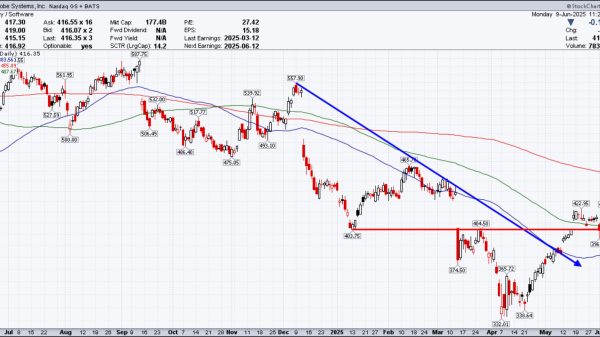What is a Return of Allotment of Shares?
What is a return of allotment of shares, what does return of allotment of shares mean? The return of allotment of shares is a fundamental process in the corporate world, where a company increases its share capital by issuing new shares.
This event signifies a pivotal moment, especially when shares are allotted to new or existing shareholders.
The allotment of shares often follows a special resolution or decision by the company’s board. It can involve various classes of shares, such as ordinary shares or preference shares, each representing a different class of share with unique rights and privileges.
When a company decides on share allotments, it’s not just about increasing the number of shares; it’s about strategically expanding the company’s capital structure.
Each allotment of shares is a deliberate move to either bring in new investors or to strengthen the stake of existing shareholders.
The number of shares issued and the amount paid for these shares, including any cash payments, are crucial details. They determine the inflow of capital to the company and impact the overall value distribution among shareholders.
What is the purpose of the Return of Allotment?
The purpose of the return of allotment is twofold. Firstly, it serves as a formal record of the increase in a company’s issued share capital.
This record, which includes details of the new shares, such as the class, number, and amount paid per share, is essential for the company’s statement of capital.
This statement is a snapshot of the company’s financial muscle at any given point, reflecting the total number of shares and the types of shares it has issued.
Secondly, the return of allotments is a regulatory requirement. Companies are mandated to submit this information to Companies House, the United Kingdom’s registrar of companies.
This submission ensures transparency and compliance with corporate governance standards. It allows stakeholders, including potential investors and regulatory bodies, to have an updated view of the company’s share capital structure.
What is the return of allotment of shares at Companies House?
Companies house return of allotment of shares is an official procedure undertaken by a company in the UK to inform the registrar of companies about the issuance of new shares. This process is a legal requirement and is essential for maintaining up-to-date public records on the company’s capital structure. Here’s an overview.
When a company allots (issues) new shares, it must report this allotment to Companies House using a specific form known as Form SH01. This form provides the details of the new shares that have been issued.
Details Included in Form SH01: The form captures crucial information about the allotment, including:
The number of shares allotted. The class of shares (e.g., ordinary, preference). The nominal value of the shares. The amount paid, or due to be paid, on each share. An updated statement of capital reflecting the company’s total issued share capital after the allotment.The return of allotment serves several purposes:
Transparency: It keeps the public record accurate and up-to-date, providing transparency about the company’s share capital for shareholders, investors, and regulatory bodies. Compliance: It ensures the company complies with the Companies Act 2006, which mandates the disclosure of such allotments. Governance: It reflects changes in the company’s ownership structure and capital, which is essential for corporate governance.The process to file a return of allotment at Companies House
Completing and filing Form SH01, ideally electronically, within a month of the allotment of shares.
Updating the company’s statement of capital on the form to reflect the new total of issued shares.
Ensuring the board of directors or shareholders, as appropriate, have authorized the allotment of shares.
Legal Implications: Failing to file the return of allotment in the specified timeframe can lead to penalties for the company and its officers. It’s a legal obligation to keep the registrar informed about such significant changes in the company’s structure.
Public Record: Once filed, the information becomes part of the public record and is accessible through the Companies House database. This transparency is crucial for corporate accountability and trustworthiness in the business environment.
The return of allotment of shares at Companies House is a critical legal process that ensures transparency and compliance in the UK corporate sector, reflecting changes in a company’s share capital and ownership.
How Do I File a Return of Allotment of Shares?
Filing a return of allotment of shares is a structured process that companies need to follow meticulously. This step-by-step guide will walk you through the necessary actions:
Prepare Form SH01 Update the Statement of Capital Board Resolution or Special Resolution Submit to Companies House File a Confirmation Statement Notify ShareholdersDetails
The first step in filing a return of allotment is completing Form SH01. This form captures all relevant information about the share allotment, including the number of shares, the class of share, and the amount paid or unpaid on each share. It’s crucial to fill out this form accurately as it forms the basis of the return.
On Form SH01, you’ll need to update the statement of capital. This updated statement must reflect the changes brought about by the new allotment of shares.
It should include the total number of shares the company now has, the aggregate nominal value of these shares, and the total amount paid and unpaid on these shares.
Before allotting shares, ensure that the board of directors or the shareholders (through a special resolution) have authorized the allotment. This approval is a legal requirement and must precede the filing of Form SH01.
Once Form SH01 is duly filled and signed, it must be submitted to Companies House. This submission is typically required within a month of the allotment.
Timely submission is crucial to avoid penalties and ensure compliance with the Companies Act.
Following the allotment and submission of Form SH01, the next step is to file a confirmation statement.
This statement is an annual requirement that provides Companies House with up-to-date information about your company, including details of share capital and shareholder rights.
Finally, ensure that all shareholders, both existing and new, are informed about the allotment. They should receive details about the class and number of shares issued, the amount paid, and any changes this allotment brings to their shareholding in the company.
The post What is a Return of Allotment of Shares? appeared first on FinanceBrokerage.
























